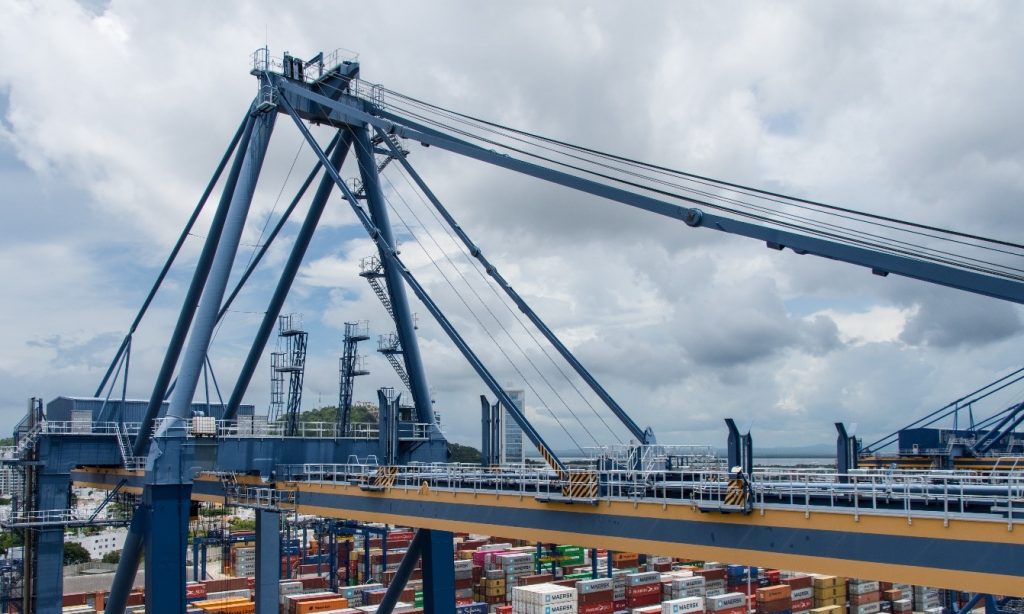Transport and trade connectivity in the age of pandemics
 Global GDP fell by 4.3 percent, and world trade fell by 9.5 percent, in 2020 due to the COVID-19 pandemic. The share of retail e-commerce, conversely, increased from 14 percent in 2019 to about 17 percent in 2020. Maintaining the flow of goods has greatly depended on countries’ capacity to implement new solutions for trade and transport operations, harmonizing border controls, and cooperating with their neighbours and trade partners.
Global GDP fell by 4.3 percent, and world trade fell by 9.5 percent, in 2020 due to the COVID-19 pandemic. The share of retail e-commerce, conversely, increased from 14 percent in 2019 to about 17 percent in 2020. Maintaining the flow of goods has greatly depended on countries’ capacity to implement new solutions for trade and transport operations, harmonizing border controls, and cooperating with their neighbours and trade partners.
This project represents a “One UN” response to trade and transport connectivity challenges due to the COVID-19 pandemic. The project promotes contactless, seamless and collaborative solutions, based on UN standards and tools, and mobilises advisory services and cooperation platforms. The project has increased countries’ capacity to preserve their connectivity during the pandemic by offering tailor-made analytical and training activities, as well as institutional measures to avoid fragmentation of digitalization and facilitation efforts.
Since its launch, hundreds of policy makers and other stakeholders across the world have been trained on best practices to support cross-border trade and transport and the relevant UN instruments. Through the project they have received access to new analytical materials on the pandemic response and have been involved in identifying best practices for trade and transport facilitation in the COVID-19 context. A global portal (https://www.unttc.org/) has been set up to present the project’s activities and outputs, encouraging cross-sectoral and cross-regional exchanges. This has led to an increased use of UN solutions for cross-border transport and trade, as evidenced by the increased number of countries joining and scaling up the implementation of the UN conventions and other tools, including the International Road Transport (TIR) Convention, United Nations Centre for Trade Facilitation and Electronic Business (UN/CEFACT) standards, Automated System for Customs Data (ASYCUDA), UNCTAD trade facilitation programme, and many others. In Asia and the Pacific, the momentum in favour of digital solutions and trade facilitation has resulted in the Framework Agreement on Facilitation of Cross-border Paperless Trade entering into force, and a higher number of digitalization initiatives along the regional network of Asian Highways and Trans-Asian Railways.
The project has supported the development of the next generation of UN tools for resilience from pandemics and similar disruptions. This includes a new package of standards and artefacts for key transport documents, aligned to the UN/CEFACT Multimodal Transport Reference Data Model. Industry actors have taken up the results of the work, producing as a first result, an electronic version of the International Federation of Freight Forwarders Associations multimodal Bill of Lading. Other examples of new global standards and solutions arising from the pandemic response include: Model Provisions for Trade in Times of Crisis and Pandemic in Regional and other Trade Agreements, ASEAN guidelines on sustainable and resilient road transport, and policy analysis of the pandemic’s impact on global maritime connectivity and port development.
The project has resulted in the operationalization of the eTIR international system three years before its planned ratification. The eTIR system supports paperless, contactless, and seamless border crossing operations, ensuring that countries’ borders can remain open during major disruptions. So far, 16 countries have officially expressed an interest in operationalizing eTIR, with half of them already advancing to connect their national customs systems with the eTIR system. Consolidation of facilitation and digitalization efforts will bear fruit beyond the timeline and scope of the current project, benefiting an increasing number of countries, international organizations, industry actors and other non-governmental stakeholders.
Read more about the Development Account’s COVID-19 response.